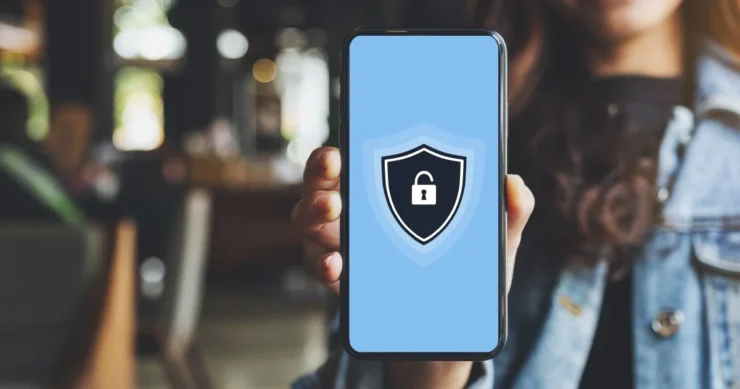In today’s digital-first world, mobile applications have become an essential part of everyday life. From banking and shopping to social networking and healthcare, apps connect users to services in ways that were unimaginable a decade ago.
However, this convenience comes with a major responsibility for developers and businesses alike: safeguarding user data and ensuring mobile app security. Cybercriminals continually exploit vulnerabilities in apps, making security a top priority for anyone involved in mobile app development or management.
Understanding the most common threats and how to mitigate them is essential for protecting both users and your organization’s reputation.
Understanding Mobile App Security
Mobile app security refers to the practices, tools, and strategies implemented to protect mobile applications from unauthorized access, data leaks, malware attacks, and other cyber threats. It is not limited to code security alone; it includes securing communication channels, databases, third-party integrations, and user authentication processes.
Failing to address mobile app security risks can result in financial losses, data breaches, regulatory penalties, and erosion of customer trust.
Businesses today must adopt a comprehensive approach to app security, combining development best practices, continuous monitoring, and user education to create a safe mobile environment.
Common Threats to Mobile App Security

1. Insecure Data Storage
Many apps store sensitive data locally on the device, such as login credentials, personal information, or payment details. If this data is not properly encrypted, it can be accessed by attackers who gain physical or remote access to the device.
Prevention: Encrypt sensitive data both in transit and at rest. Use secure storage mechanisms provided by mobile operating systems and avoid storing critical data on external storage. Regularly audit your data storage practices to ensure they remain secure.
2. Weak Authentication and Authorization
Weak or improperly implemented authentication mechanisms are among the most exploited vulnerabilities in mobile apps. Attackers often exploit simple passwords, lack of multi-factor authentication (MFA), or poorly configured session management to gain unauthorized access.
Prevention: Implement strong password policies and encourage multi-factor authentication. Use session timeouts and token-based authentication to prevent unauthorized access. Regularly review access permissions to ensure users have the appropriate level of access.
3. Insecure Communication
Mobile apps frequently exchange data with backend servers or third-party services. If these communications are not properly encrypted, sensitive information can be intercepted using man-in-the-middle attacks or packet sniffing.
Prevention: Use Transport Layer Security (TLS) for all communications. Avoid outdated encryption protocols and implement certificate pinning to verify the server’s authenticity. Ensure that API endpoints are secure and regularly tested for vulnerabilities.
4. Code Vulnerabilities
Bugs and vulnerabilities in the app’s code can be exploited by attackers to inject malicious commands, manipulate app behavior, or bypass security controls. Common examples include SQL injection, buffer overflows, and improper input validation.
Prevention: Conduct regular code reviews and use automated tools to scan for vulnerabilities. Follow secure coding standards and implement input validation to prevent injection attacks. Employ runtime monitoring tools to detect suspicious behavior.

5. Malware and Reverse Engineering
Mobile apps can be reverse-engineered to uncover sensitive logic or keys, which can then be exploited. Additionally, malicious apps installed alongside legitimate ones can compromise data or steal credentials.
Prevention: Implement code obfuscation and tamper detection mechanisms. Monitor app distribution channels and educate users about downloading apps from trusted sources. Regularly update apps to patch known vulnerabilities.
6. Insufficient App Updates
Many mobile apps remain vulnerable because developers fail to release timely updates. Outdated software can harbor known vulnerabilities that attackers exploit.
Prevention: Establish a regular update schedule and ensure users are notified about critical patches. Use automated testing and deployment pipelines to speed up the update process while maintaining security standards.
7. Third-Party Libraries and SDKs
Third-party software components can introduce hidden vulnerabilities. Many developers rely on external libraries for features like analytics, social integration, or payment processing, which can be exploited if not properly vetted.
Prevention: Conduct thorough security assessments of third-party libraries and SDKs before integration. Regularly monitor these components for updates and vulnerabilities. Limit permissions for third-party components to reduce potential attack surfaces.
Strategies for Strengthening Mobile App Security
- Integrate security into development ─ Security should not be an afterthought. Incorporate it into every stage of the app development lifecycle, from design to deployment. Implement threat modeling, static and dynamic code analysis, and secure coding standards to minimize vulnerabilities.
- Continuous monitoring and threat detection ─ Even the most carefully developed apps can face emerging threats. Implement monitoring tools to detect unusual activity, suspicious transactions, or potential breaches in real time. Proactive threat detection helps prevent minor issues from escalating into full-scale breaches.
- Educate users ─ Users play a critical role in mobile app security. Provide clear guidance on setting strong passwords, recognizing phishing attempts, and updating the app regularly. User awareness can significantly reduce the risk of social engineering attacks and accidental data exposure.
- Adopt a zero-trust approach ─ Zero-trust security assumes that threats can originate from both inside and outside the network. Verify every request, authenticate every action, and monitor app interactions continuously. This approach reduces reliance on perimeter security and minimizes risk exposure.
- Leverage advanced security solutions ─ Organizations can benefit from advanced mobile security solutions that combine encryption, malware detection, runtime protection, and compliance management. Tools that automate threat detection and reporting reduce human error and enhance overall security posture.

The Role of Continuous Improvement
Mobile app security is an ongoing process. Threats evolve, attack techniques become more sophisticated, and compliance standards change regularly. Organizations must continuously assess, test, and improve their security measures. A proactive approach ensures that apps remain safe, user trust is maintained, and regulatory requirements are met.
Conclusion
Protecting mobile applications from threats is no longer optional; it is essential for maintaining user trust, safeguarding sensitive data, and ensuring regulatory compliance. By addressing insecure data storage, weak authentication, code vulnerabilities, and other common threats, businesses can significantly improve their mobile app security.

